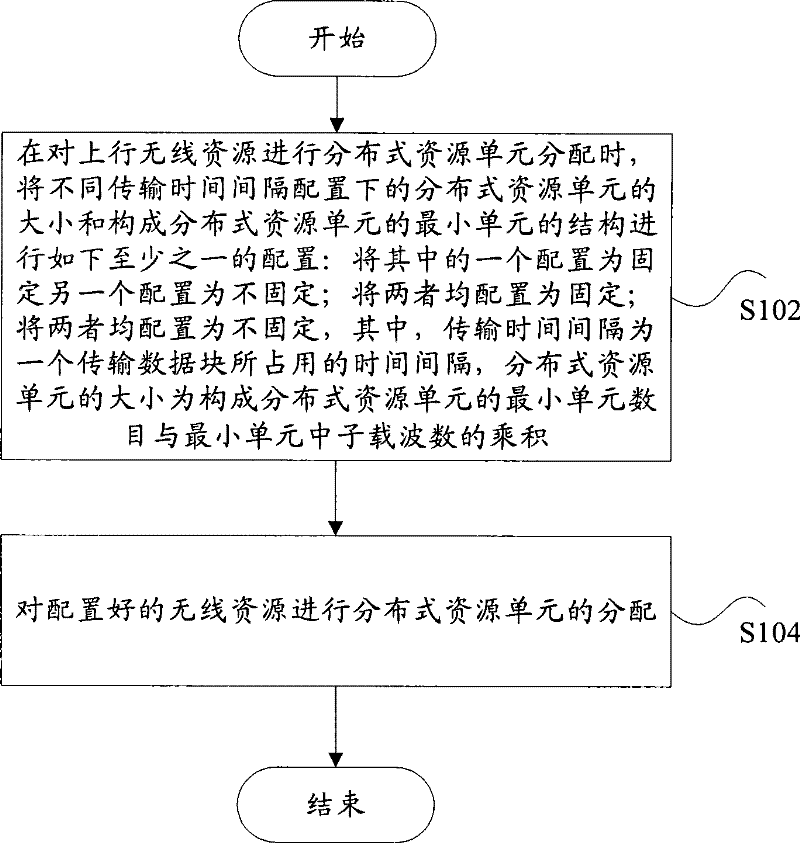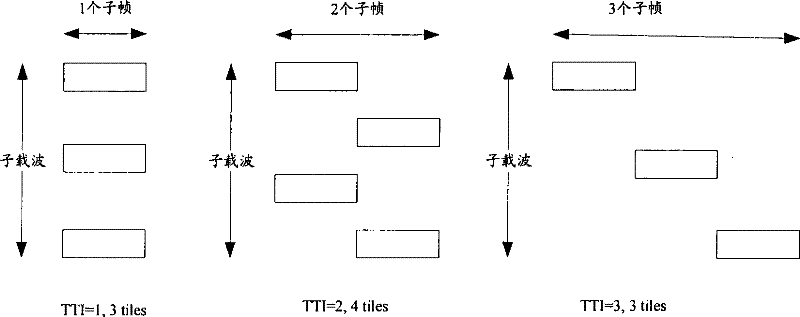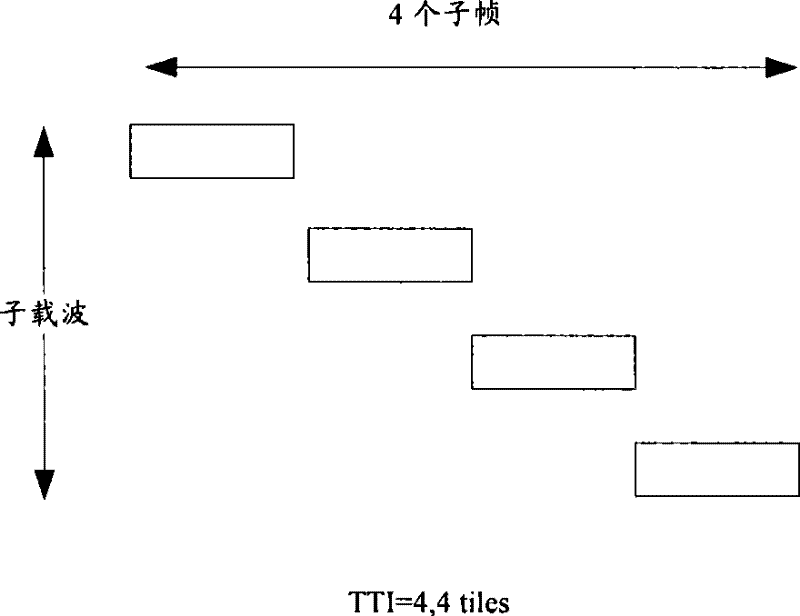Method and device for allocating resource units
A resource unit and allocation method technology, applied in the field of communication, can solve the problem that resource blocks cannot improve uplink coverage, etc., and achieve the effect of maintaining the unity of design, fully and efficiently utilizing resources, and improving performance
- Summary
- Abstract
- Description
- Claims
- Application Information
AI Technical Summary
Problems solved by technology
Method used
Image
Examples
example 1
[0060] Assuming that the size of the basic unit tile constituting the resource block is 6*the number of symbols in the subframe, for a regular subframe, the number of symbols is 6, then the size (structure) of the tile is 6*6, and the distribution under different TTI configurations The size of the resource block DRU is variable. When the TTI is set to 1 subframe, a distributed resource block DRU is composed of m discretely distributed tiles, assuming that the value of m is 3, the size of the DRU is 3*6*6.
[0061] Such as Figure 4 As shown, when the TTI is set to 2 subframes, a subframe concatenated distributed resource block DRU consists of m discretely distributed tiles, assuming that the value of m is 4, the size of the DRU is 4*6*6, and each There are two discretely distributed tiles on each subframe, and the tiles on the two subframes are staggered in a certain frequency hopping manner.
[0062] Such as Figure 5a As shown, when the TTI is set to 3 subframes, a subfra...
example 2
[0065] Such as Image 6 As shown, when the TTI is set to 2 subframes, a subframe concatenated distributed resource block DRU is composed of m discretely distributed tiles, assuming that the value of m is 2, the size of the DRU is 2*6*6, and each There is one tile on each subframe, and the tiles on the two subframes are staggered and distributed in a certain frequency hopping manner.
[0066] The second case: when the size of the resource block DRU is fixed, the structure of the tiles constituting the distributed resource unit is not fixed. In the above cases, the following aspects should be paid attention to:
[0067] 1. DRUs under different TTI configurations are composed of the smallest unit tiles with the same or different structures. For different TTI settings, the tile structure that constitutes the DRU corresponds to different TTI settings. Some TTI settings can be the same, and some TTI settings can be different. .
[0068] 2. Under various TTI configurations, the ti...
example 3
[0074] The size of the distributed resource block DRU under different TTI configurations is the same, but the tile structure can be different. Assume that the size of the basic unit tile that constitutes a resource block is 6 subcarriers * the number of symbols in a subframe and 9 subcarriers * The number of symbols in a subframe, for a regular subframe, the number of symbols is 6, and the size (structure) of the tile is 6*6 and 9*6. TTI is set to 1, 2 and 3 subframes.
[0075] Such as Figure 7 As shown, when the TTI is set to 1 subframe, a distributed resource block DRU is composed of m discretely distributed tiles, assuming that the value of m is 3, and the tile is 6*6, the size of the DRU is 3*6*6 .
[0076] Such as Figure 7 As shown, when the TTI is set to 2 subframes, a subframe concatenated distributed resource block DRU is composed of m discretely distributed tiles, assuming that the value of m is 2 and the tile is 9*6, the size of the DRU is 2*9*6. There is one...
PUM
 Login to View More
Login to View More Abstract
Description
Claims
Application Information
 Login to View More
Login to View More - R&D
- Intellectual Property
- Life Sciences
- Materials
- Tech Scout
- Unparalleled Data Quality
- Higher Quality Content
- 60% Fewer Hallucinations
Browse by: Latest US Patents, China's latest patents, Technical Efficacy Thesaurus, Application Domain, Technology Topic, Popular Technical Reports.
© 2025 PatSnap. All rights reserved.Legal|Privacy policy|Modern Slavery Act Transparency Statement|Sitemap|About US| Contact US: help@patsnap.com



